Being based in Osaka, I’m often asked why I haven’t yet interviewed any of the legendary Osaka 5. A fair question, one I usually half-heartedly answer along the lines of, “Well, they’ll always be close by so I figure I’ll just start off with the ones further afield…I can interview the Osaka fellahs any time.” But I can see now it was more than that. Though the honorific title “Osaka 5” is used more outside Japan than in it, it still does have a certain gravity to it…like a sacred brotherhood, a solid and impenetrable ring of denim legends whose standing and reputation lay beyond question in the minds of denimheads the world over.
But recently I got to thinking that the time had come. And it’s not like the brands I had spoken to thus far weren’t also nearly mythical in stature – if I could sit down and chat with Iron Heart, Samurai, PBJ, Momotaro, TCB, well then why not some of the Osaka 5? Surely they were just regular men like the rest of us. I poured myself a cold IPA and got down to thinking who I would contact first. Thus emboldened, I picked up the phone and got hold of Full Count’s Mikiharu Tsujita. And I’m glad I did. He was keen from the start, and before I knew it I was standing in front of Full Count’s downtown Osaka office waiting for the man himself to arrive.
I knew I was a bit early for our appointment so I bought myself a vending machine tea and sat down on the curb across the street from Full Count’s front door to wait. No sooner had I cracked my drink I heard an unholy roar and rumble from somewhere in the distance. It grew louder and soon I could make out what looked like a Lotus Super 7 race car thundering down the street towards me. “I wonder if…” I mused to myself. Sure enough, it was Tsujita-san, a sight completely at odds with the modern urban surroundings. Wearing old school leather goggles, one of those fighter pilot caps with the wooly earflaps and a vintage Brown’s beach jacket, he climbed up out of the car and greeted me with a smile. We headed inside and got started. He was open, friendly, and actually answered about half my questions in English. It was a fantastic education for me about the early days of the denim scene in Osaka, and I hope you will enjoy it as much as I did.
Tsujita-san, firstly thanks so much for taking the time out to talk with me. I really appreciate it.
No, no, thank you. Thanks for coming down. And you can call me Miki… everybody does, it’s easier.
Okay, thanks. Can I ask, what was the original drive or motivation to start up your own denim company?
Well, in about 1989, I worked at a vintage shop in Osaka called Lapine. You know Yamane-san from Evisu, right? He was my boss there. The shop would buy vintage clothing from places like LA or wherever, and then sell them in Japan. I used to be a customer at that shop too actually, like when I was 19 or so. I think Yamane-san was about 26 or 27 when I first met him.
Ah okay. I knew you guys were connected somehow, but I didn’t realize he was your boss at Lapine.
Yes, but even back then vintage stuff was getting harder and harder to find. Even if you went to the States, a lot of that stuff was disappearing, so people started thinking about making their own stuff here. So Yamane-san started to make his own stuff, but it wasn’t like really serious or anything in the beginning…you know, just making small amounts of stuff and selling mostly to friends, that kind of thing. That would have still been 1989.
Okay.
So I was in the midst of all of that and I started to get more and more interested in vintage jeans..you know…jeans are like…oh man, this is gonna be a long story …(laughs)
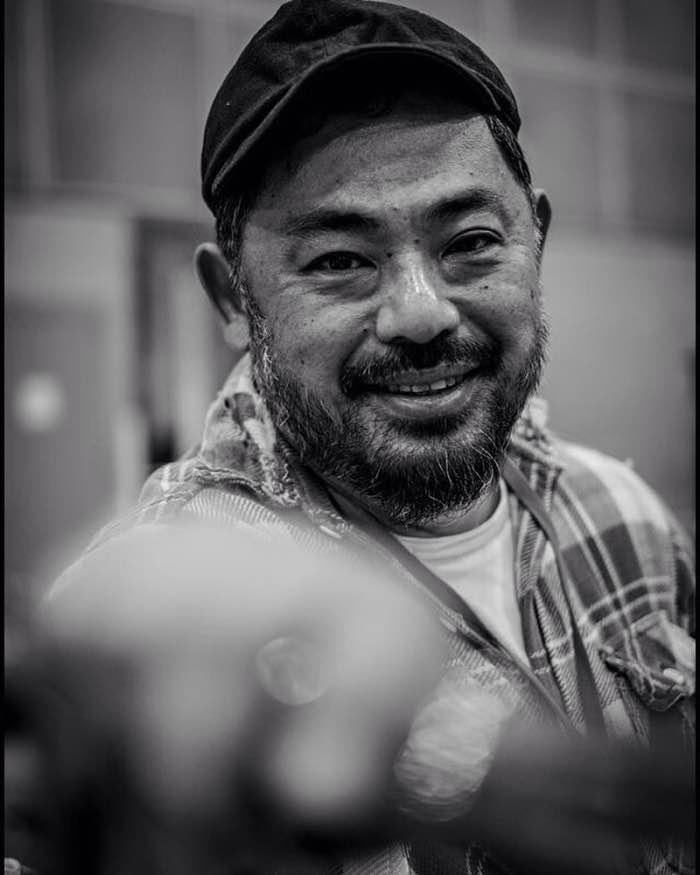
No problem, we’ve got lots of time. Go ahead.
Jeans were first made as workwear, as you know. Then in the 60s jeans started to shift into being a fashion item…on the east coast of the States you know, the hip university kids starting wearing jeans, movie stars too, and jeans started getting more and more popular. But while they started as purely a practical item, something that fit your body well, in the 60s they then started to move off into fashion territory where how they actually fit, or the fabric itself, wasn’t always the primary concern. So that’s why guys like me who were into the whole vintage craze loved old jeans so much. The fabric and how they fit the body were paramount back then, and a lot of that had been lost once they became known more as just a fashion item.
I see. Go on.
So here we were buying up vintage stuff, but the result of that of course was that they just got pricier and pricier, and of course harder to find. So the idea then was to make ‘new’ jeans, but in the traditional way…the way they used to and then continue on like that. When Yamane-san started Evisu, I was there as well, working with him. Would have been 1991 by this time. You know what Evisu jeans are like, right? They have all these symbols and stuff on them so, yeah…for me they were just kind of…a bit…mmmmm…how do I say it?(laughs). But of course the jeans he was making had an important role in the denim revival here in Japan, and I also had a role in all of that, but I wanted to make something better. Something I could continue making for a long time into the future. So at the end of the next year, 1992, I decided I was going to do something on my own. I was 25.
Wow. Young, really.
So I started out by making stuff for friends around Japan. At that time you had brands like Denime and Studio D’Artisan also doing their thing. You know of course, Studio D’Artisan had already been doing their thing for years by this point, but he (Tagaki-san, the creator of SDA) was into the whole European thing, especially the scene in Paris. So his stuff wasn’t so much American vintage as it was a kind of take on French casual fashion. That’s the direction he took. You now had Evisu too, of course. Then you had the twins at Warehouse…they actually used to be my customers when I worked at Lapine. They were basically just kids then, 15! Junior high school students, both of them. But they were super enthusiastic about jeans so…you know, we all helped each other and became friends. Nobody was enemies or anything like that back then. We worked together to get the word out, make stuff and see what we could do with it. Then things went totally nuts in the mid 90s and suddenly we were able to sell a lot of the stuff we were making. People loved that we had started small, you know, just as a passionate hobby and were able to build something from that and create quality stuff that was now selling really well.
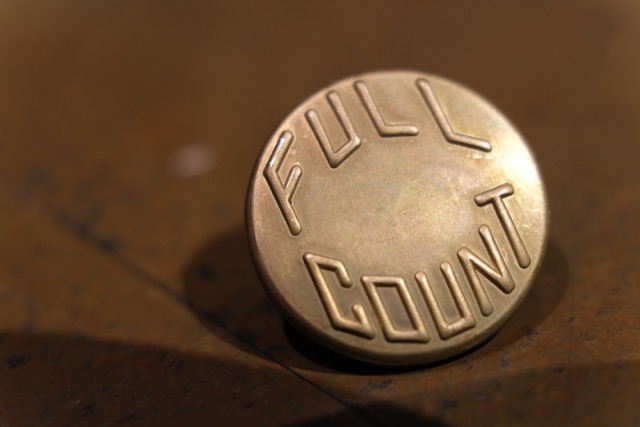
That’s awesome. Humble beginnings.
Yeah it really wasn’t until around ’95 or so that we really got serious you know…no longer feeling like embarrassed or something about what we were making. It was then that we went all-in…right down to creating thread from scratch. It’s not that I wasn’t serious before that time but, yeah, this was the time when I decided that every element would be done with no compromise whatsoever. The best possible. I feel lucky that things went the way they did, and it was awesome the way people paid back our passion with their patronage.
Were you satisfied with what you were making at first?
Well by the time I established Full Count I had already been involved in making jeans while at Lapine, then with Evisu, so at least I basically knew what I was doing when I started my company. So yeah, I had a pretty good handle on it when I went out on my own. But it wasn’t until ‘95 or after that I was truly satisfied with what I was making. All up, from when I very first started making jeans to when I thought what I was making was of a high level was probably about 5 years I guess.
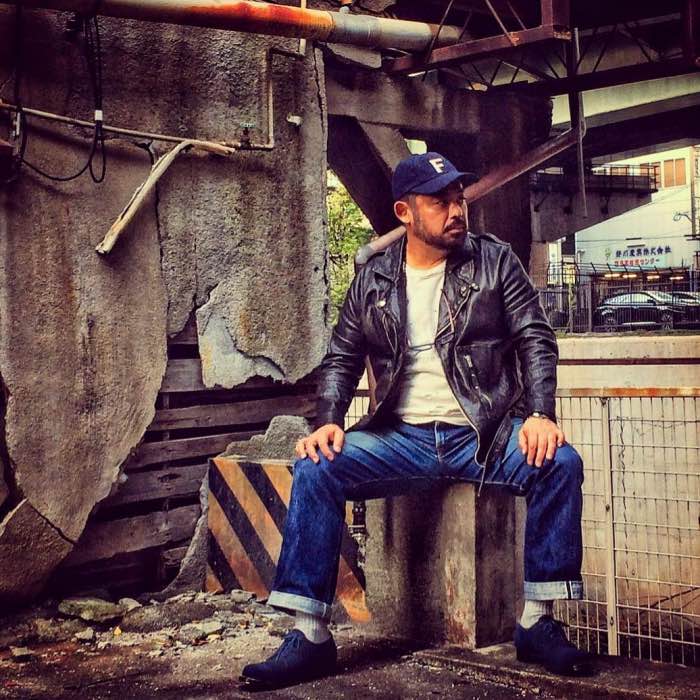
What about the name, Full Count? Did you just make it up or did it come from somewhere?
Ahhh, it’s from baseball. Baseball is so popular in Japan, so the image of a “full count” is, you know, 3 balls and 2 strikes, right? So in the very next moment you’re either going to strike out or you’re going to get a hit…it’s that charged moment when things are going to go one way or the other. That’s the image I had in mind. You’re at your best in that moment. I used to play baseball so that’s why.
Totally makes sense. I had thought it was about boxing for some reason (laughs). You know, like a 10 count and you’re out.
Ah yeah, there’s totally that meaning too isn’t there? But this one is about baseball.
Were there any setbacks or difficult things for you back then? At the start?
Nothing BUT difficult things! (laughs).
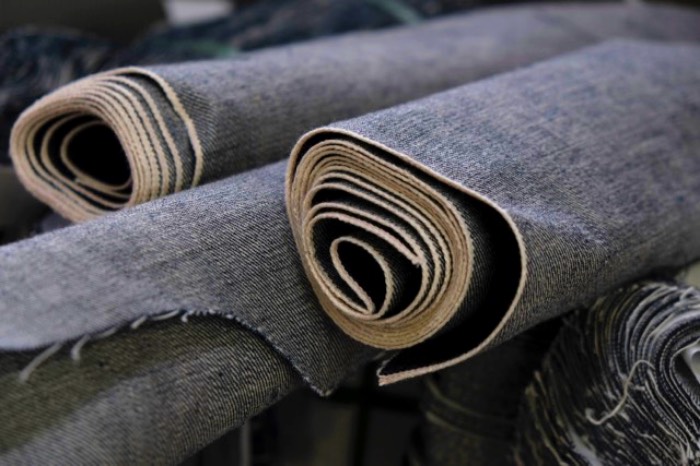
Like what kind of things?
Firstly, the way of making jeans in Japan then…the way of sewing…like, for example when I wanted to doing our sewing with cotton thread, well that kind of thread just didn’t exist. It was all polyester thread by that time. If we couldn’t have it specially made for us by someone, then we just didn’t have it. And the minimum quantity required to do a thread order was…huge. Like crazy huge. But we had to do it, so we’d go to thread manufacturers and we had to get crafty and try to convince them and say things like, “Hey, if you make this cotton thread for us, maybe Edwin will use it. Maybe even Levis!” And funnily enough, that did actually end up happening. From that time, it started becoming standard for these companies to also use cotton thread, so in that sense, these cotton thread factories actually ended up getting pretty lucky by what we had done.
That’s funny….
Yeah it was like that for a lot of stuff. Want buttons? Then you have to have them made…get someone to make them for you. About fabric, you know, these days you can do fairly small runs of jeans if you want, like 50 or 60 pairs in some cases. But back then the minimum would have been about 1000 pairs at once.
What? Wow…that’s a lot of jeans at one time. You’d certainly hope they’d be popular or you’re screwed!
Right. My very first batch was 800 pairs…(laughs). I managed to get ‘just’ 800…(laughs) Back then if you wanted to make your own original fabric, just something with an indigo warp and a white weft, the minimum lot was 4000 meters.
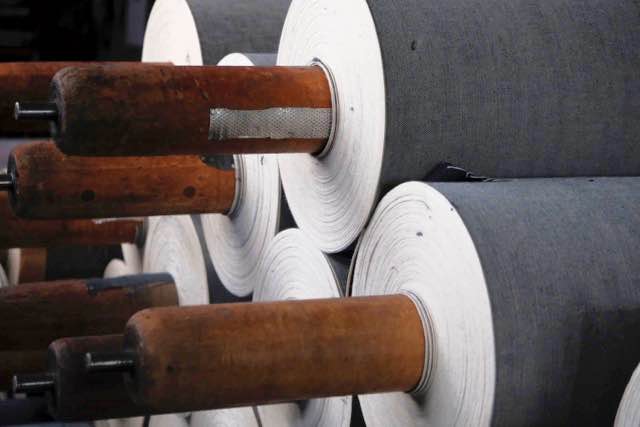
You mean, like 4 kilometers of denim? (laughs)
Yep. And it cost 5 million yen (about $45,000 US at time of writing) for a single lot. Cash only.
Cash. Wow. That would be a large, gangster-like briefcase (laughs). How about the minimum lot these days?
Nowadays it’s about half of that for original fabric. So you had to shell out 5,000,000 yen all at once, right at the start. And that was just the fabric itself. So I was so busy trying to buy and sell vintage stuff like Levis “XX” to make money so I could make my own fabric…buy the vintage stuff cheap, sell it for more in Japan. And of course I was selling other stuff too, trying to get enough money for one lot of denim. My wife…she was pretty pissed though…5 million yen! So to answer your question, yes, it was pretty hard at the beginning.
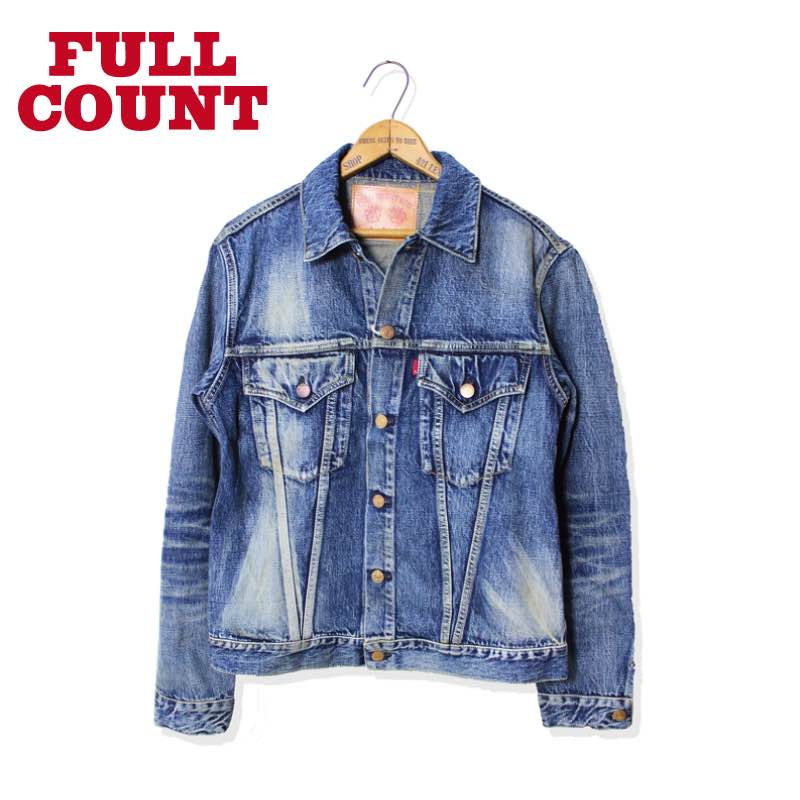
Back then, the looms and mills were already basically just in Okayama, right?
That’s right. Back in the 70s and 80s the mills in Ibara (Okayama) were doing work for Cone Mills. They would export Levis stuff. But they stopped using shuttle looms in the States of course…pretty much everywhere until the only ones really left were in China and Japan. So when guys like us started asking, they had to get all the old machines up and running again. You know, at first they didn’t really want to do all that work of getting the old stuff running, so that’s why they’d say things like, “Well…sure we’ll do it if you order 4 or 5 thousand meters, but otherwise forget it”.
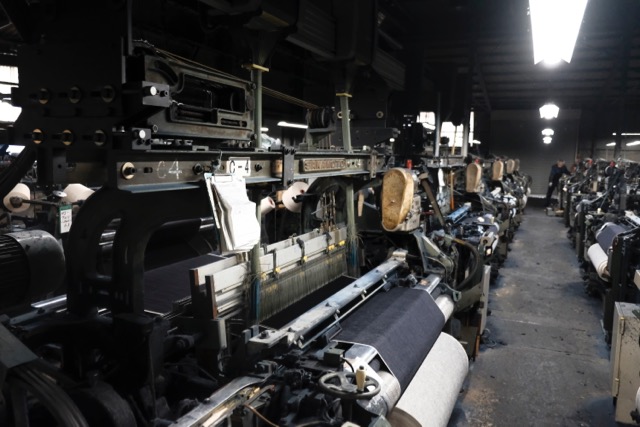
You first cuts, were they created by you from scratch?
Yes, they were. Of course though I had the vintage style in mind so there was that influence from the start informing what I was doing, but as far as the cuts and measurements and such, I did those from scratch. The first batch I did were called 1101 (brings out sample pair). The first “1” means “basic”, the next one “bottoms” and then “01” meaning the first ones I’d done. For me, the most important thing I wanted to do is make the same thing for a long time. Like if you had bought these 10 years ago you could…well, let’s say that if you wear these jeans every single day for 2 years, they’re probably gonna be pretty much done. If you wear them once a week, then maybe you’ll get 10 years out of them. At that time, if you’re like, “Those were awesome, I want the same ones again”, well most brands have changed models or fabrics by then, and then you feel crappy and disappointed because you can’t get them again. I don’t want that to happen, so I make it a policy to always keep our 5 basic or core fits the same as we move ahead. That consistency is a big part of our concept.
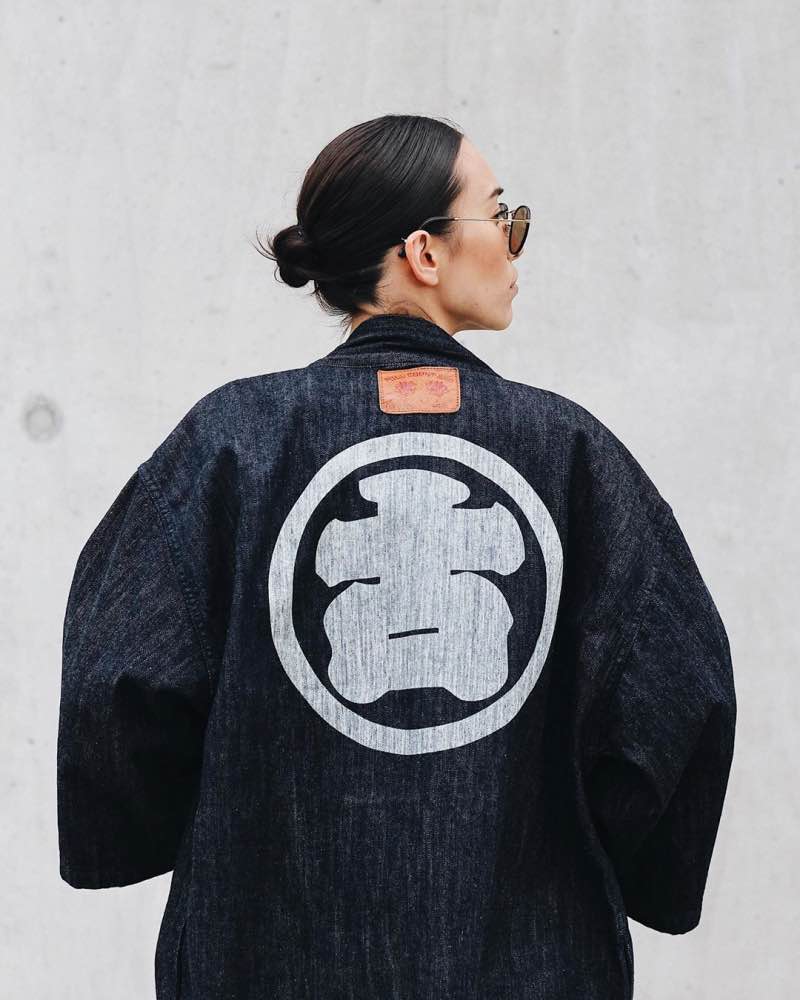
And you’ve used Zimbabwe cotton from the start?
From ’95, yes. That was one of the biggest discoveries for me…finding out what amazing jeans you can make from Zimbabwe cotton.
The next one might be a bit awkward, but what other denim brands do you like or respect? Like, “Damn, those guys are doing a good job with their stuff”.
Hmmmm, yeah, probably the ones who are most like us in what they are doing…friends and competitors…yeah, it’s gotta be Warehouse. It’s funny, like when I look at their stuff there’s certain important points you check for so I’m like, “Hmmm, I wonder if they…oh damn, yeah they did!” and they’re the same with my stuff. “I wonder if Miki does this…ah yeah he’s got it figured” kind of back-and-forth. We’ve done that since the beginning. But to be honest, aside from the vintage kind of stuff we are doing, of course there’s the ‘next generation’ guys doing the more modern stuff. The street culture kind of stuff, and there are definitely some of those brands I think are really cool.
Are you guys all friends or do you feel some sense of competition with other brands?
Back in the 90s there was competition for sure…inevitably…but these days we’re all just friends. Evisu, Real McCoys, Warehouse. And of course the guys you already know: Haraki-san (Iron Heart), Nogami-san (Samurai), Iwaya-san (Pure Blue Japan), you know, we’re all buddies. They’re just really good people.
Do you have any personal favorite model of jeans that you’ve made?
(long pause). Mmmmm, I guess it would have to be the 0105. (gets sample pair). So these look a lot like the last pair I just showed you, but…yeah, for me these have the most memories attached. So when I first started working with Zimbabwe cotton I used the first product number “1”, but when I made these jeans I thought that they were the best thing I had ever done…so I went with “0” as the first number, the number even before “1”. I’m wearing a pair right now actually.
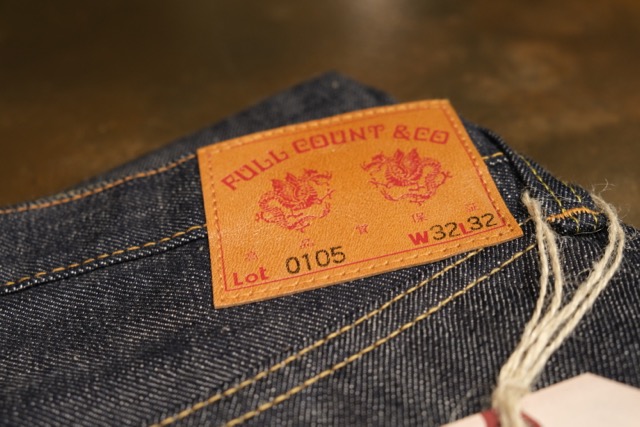
What was it like being in that documentary, Weaving Shibusa, that came out a few years ago?
Yeah, it was good. Some people came from Washington and shot it. Even watching myself in it I’m not sure if I was good or not, but people seemed really happy with it, so…yeah, it was fun.
I’d like to talk a bit about your fabric now…maybe a bit about the mills you use.
Sure.
You are just using one place?
There’s a bit more to it, but yeah, basically just one place.
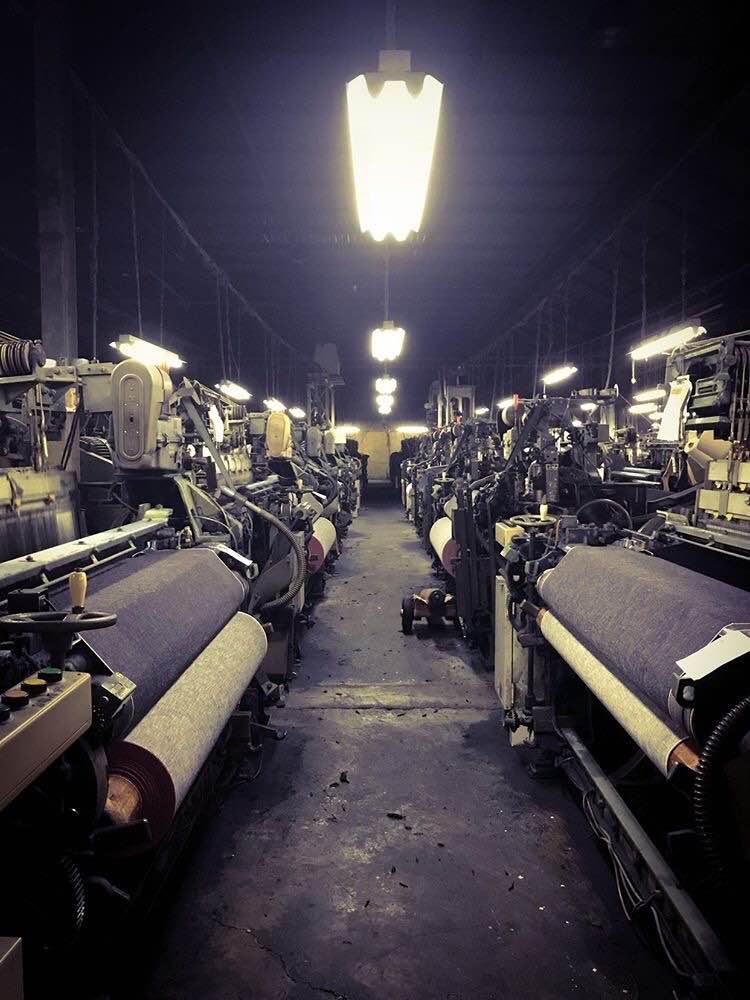
What’s that whole process like? Or what is the communication like between you and the mill, say, when you want to make a new denim or something?
Well, in my case they aren’t making any new types of denim for me so I’ve just been weaving the same type for a long time there.
So you don’t really need to go to the mill in Ibara?
No, I do actually have to go there. For quality control.
Can you tell me the name of the mill?
It’s Shinya.
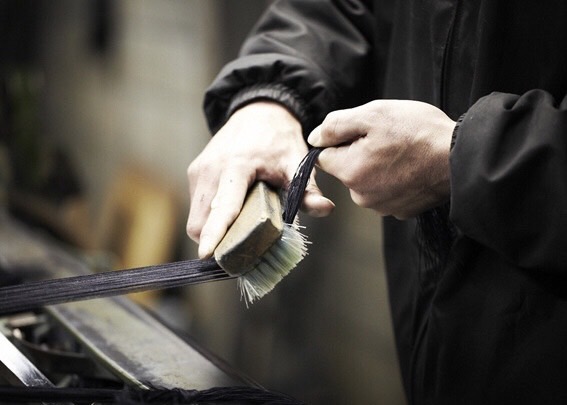
Okay, cool.
So they’ve got 70 looms there, 4 of which only run for Full Count. No other brand can use those machines…the reason being that I was the first one to use that place. At that time there were only 10 looms in total. Since then they’ve slowly acquired other looms to increase their production. So because they started with me I’ve been able to stay on those 4 machines the whole time.
I see. That’s great.
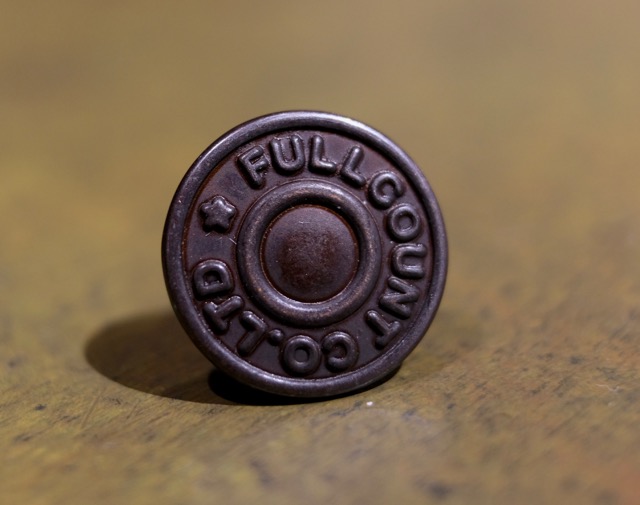
It was the same with Collect…you know Manabe-san (Owner of Japan Blue, Momotaro, and Collect Mills) of course, right?
Yeah, sure.
I first met him in about ’94. He was a textile manufacturer, probably started in about ’91 or ’92. Kind of same timing as my start, so I was actually their first customer, Full Count was. But of course there were other big mills around back then like Kurabo, Kaihara…
Nihon Mempu?
Yeah, them too. I first went knocking on those kind of places’ doors, but because I was small and just starting out they…well, they weren’t very cooperative to say the least. But Collect was…there was another guy there at Collect, Suwaki-san, and he was just starting out like me so we decided to kind of work together. So Collect and Full Count kind of started and grew together at the beginning.
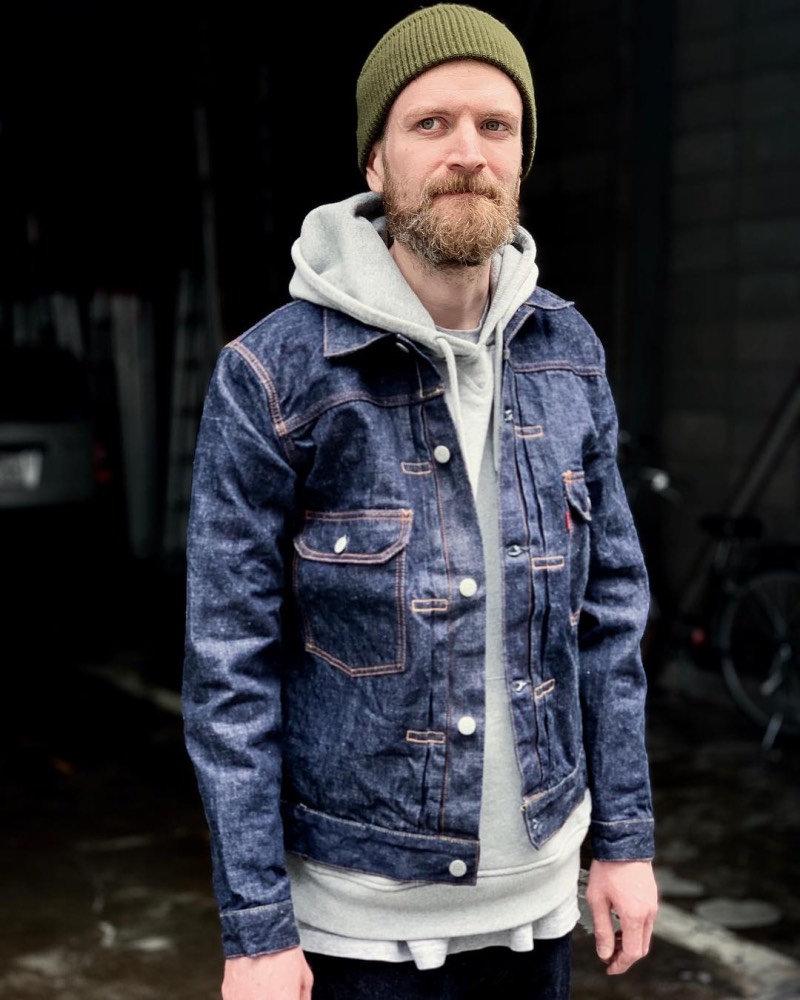
Wow, I didn’t know that. While we’re on the topic of denim, are you concerned that there could be a selvedge denim shortage in the future here in Japan? Aging operators and repairmen, machines breaking down…
As far as looms go, it’s gonna be fine. They’re like cars, you know, when modern ones break down they’re hard to fix…basically run by computers. But when an old car breaks down, you can fix it pretty quickly. Looms are like that. They’re really not that hard to fix actually.
And there’s still parts around to do that with?
Yes, there’s still parts.
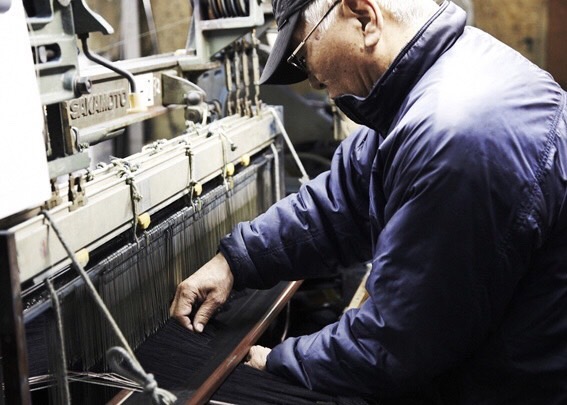
And people to fix them?
I think that as long as the demand is there, as long as such a job exists, there will be people to do it. Of course, if jeans suddenly become unpopular and the demand for denim disappears, then yeah, it would be hard to get people to get into loom repair…but I think it’s going to be fine. The biggest problem is sewing.
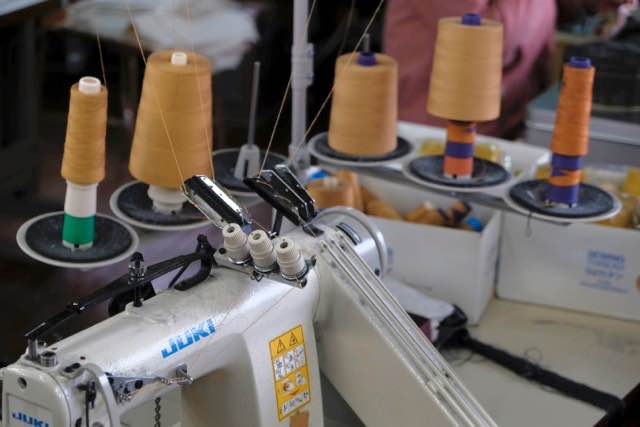
You know what? Everybody says that, has the same concern.
In Japan it’s seen as an old ladies’ job. Sure, I wish that young guys could get into it…that would be great, but…it’s hard.
Is your sewing done here in Osaka?
No, it’s done in Okayama. We have a place that sews only for us…it’s a separate company, but they only do work for Full Count.
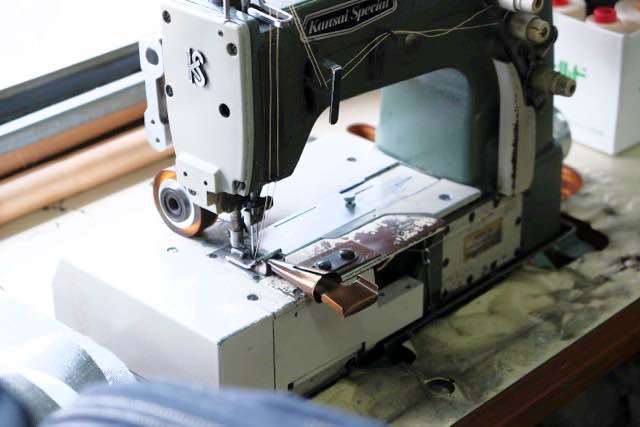
Do you actually sell jeans out of this location (Osaka office)?
No, we don’t actually sell from here.
Do you ever have overseas customers showing up here?
Yeah, for sure. Maybe once every few days? But we’re always like, “Sorry, this is not actually a shop.” (laughs)
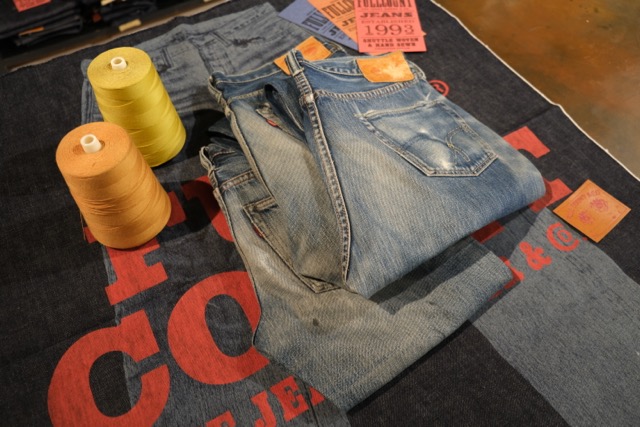
I get it though because if you look this place up on Google, it really does look like a shop.
Yeah I know, it does.
Do you see any differences between Japanese and overseas customers? Like what they want, what they don’t want…
Hmmm, well for the kind of Japanese customer who is into our stuff, they’re usually guys who were really into vintage stuff back in the day and that’s kind of the style they expect from us. When they put on our jeans they want them to feel like vintage jeans. Overseas customers come because they feel that “Japanese denim is number one” kind of thing…so it’s a bit different. But for like normal Japanese people (who aren’t necessarily into denim) they’re like “Oh, denim! Diesel?!” (laughs)
Changing gears a bit here, what would you say is the best part about your job?
I think it’s when the new samples are done up every season.
Fabric samples?
No, our new product samples.
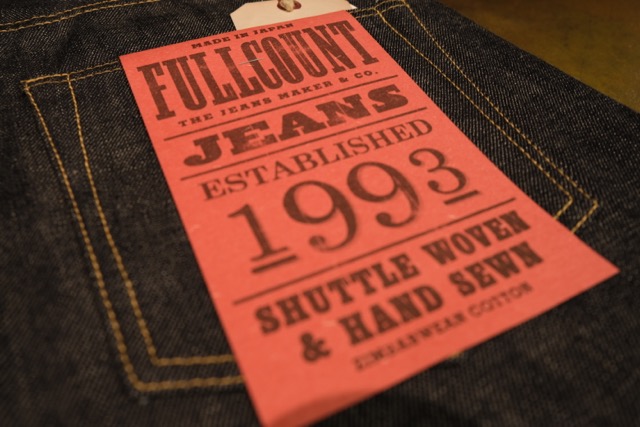
And the hardest part of your job?
Ah, that would be communicating with my boys.
Communicating with your boys?
My male staff. I’m 53 and they’re in their 20s. Generation gap. They’re not all like this, but generally… So Japanese people work really hard. Like I made this company doing something I love so it’s easy for me to work hard and concentrate on what I’m doing form morning ‘til night, you know? Work becomes more fun than going out to have fun. But these days, even if a young person finds a job like that…I don’t know…it’s really still just a job. Just for making money. Money is fine of course, but the number of people who are really out there trying to find something or somewhere they can work with a real passion, doing something they love, seems really small now.
I’ve heard that from a few people.
A lot of young people here just want to get rich quickly. Be a YouTuber or try some risky new investment, that kind of stuff is getting really popular. And it’s not like you can tell them any different, like the old, “Sonny, when I was your age….” kind of story just doesn’t work. They don’t want to hear it.
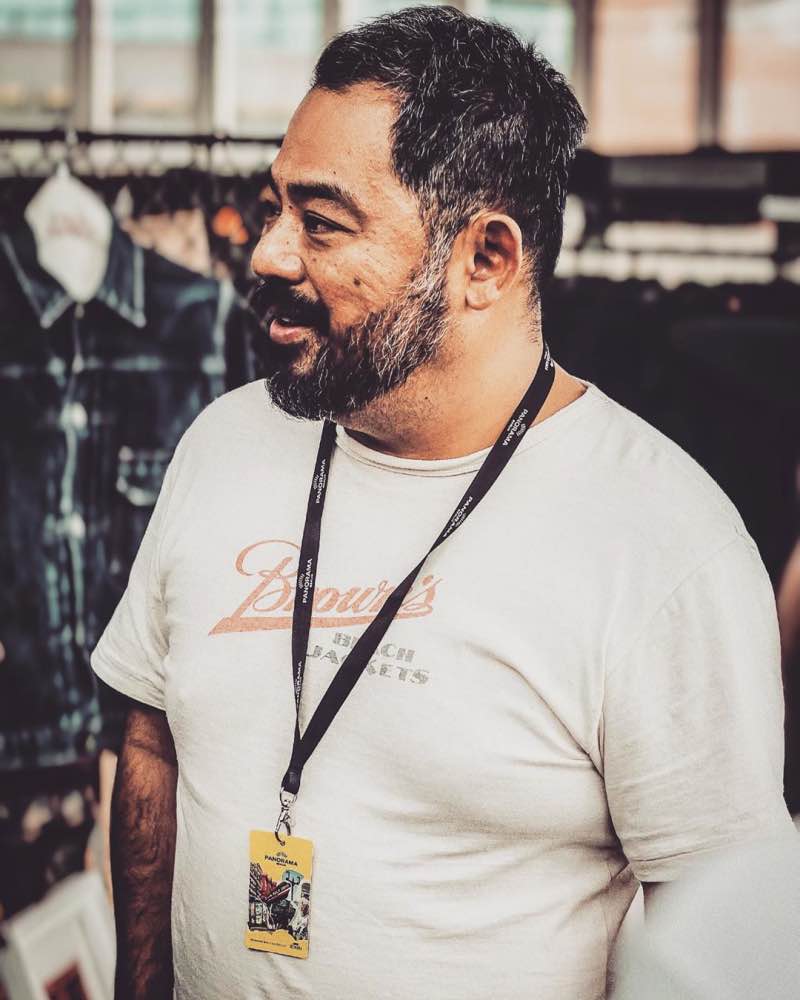
I get it. What’s your own personality? In your opinion, of course (laughs)
I am passionate about the things I like. And the stuff I don’t like…I just don’t care about it. (laughs)
How about hobbies?
I love driving.
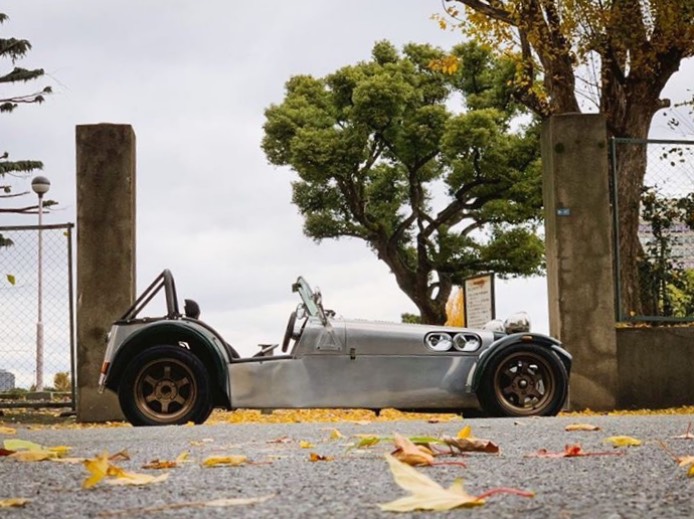
That car you came in on? What is that thing anyway?
It’s called a Birkin 7. But that one’s a kit…really easy, all-aluminum body. But compared to modern cars of course they’re a massive hassle to keep running…but that’s the fun I guess. Aside from that, I love to play pool, billiards. I sometimes enter pool tournaments.
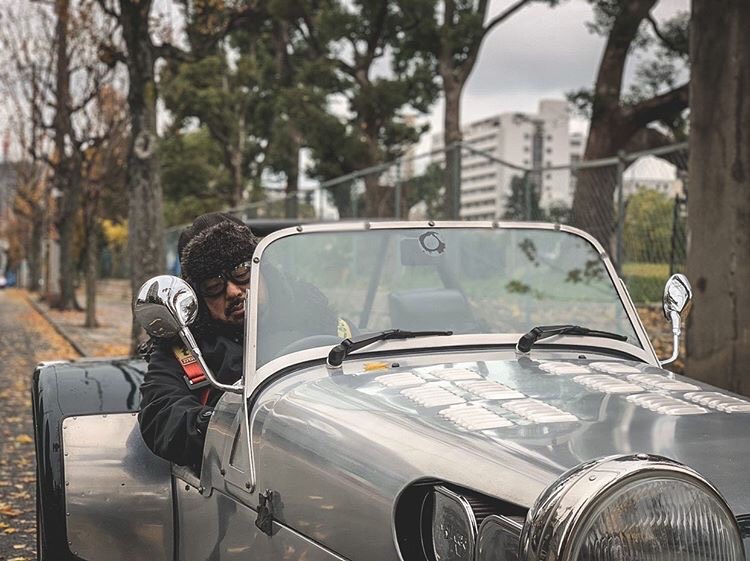
What do you think about some jeans companies now offering lifetime warranties, free repairs, etc.?
Well, we do of course do hemming for free. About other repairs, even for difficult ones, we undercharge, you know, like 1000 yen even for something that’s really damaged or a complicated repair. Nowadays, yeah, more places are doing it for free, and actually I also used to do repairs for free, but to be honest if you’re really going to do difficult repairs properly it’s pretty hard to keep doing them for free. But at the end of the day, we really don’t charge much for our repairs.
Do you need to send all repairs back to Okayama to get done?
No, we do them here in Osaka. Ah actually, every so often we need to send something back to Okayama, but basically we do them all here in Osaka.
I probably should have asked this earlier, but some people kind of have a bad image of Zimbabwe or feel that it’s not a good idea to support the country by using their products…like the government is corrupt or there are slave-like working conditions. What is your take on this, seeing as you use Zimbabwe cotton?
Yeah, I know what you mean. That’s a difficult question. When I first started to sell in London, maybe at Harrod’s or Liberty, I don’t remember, but they were like, “No. Zimbabwe is not good.” There was a real stigma against the place. But the reality is that the leader of Zimbabwe is now dead, maybe last year, so I think the conditions there are now improving. It’s a bit like North Korea, a dictatorship, but in North Korea you have one family that passes on ruling power. In Zimbabwe, you had one guy, Mugabe-san, starting in 1980…and just a dictatorship lasting almost 40 years up until last year. But he’s gone and I think that things in Zimbabwe are just going to get better from now on.
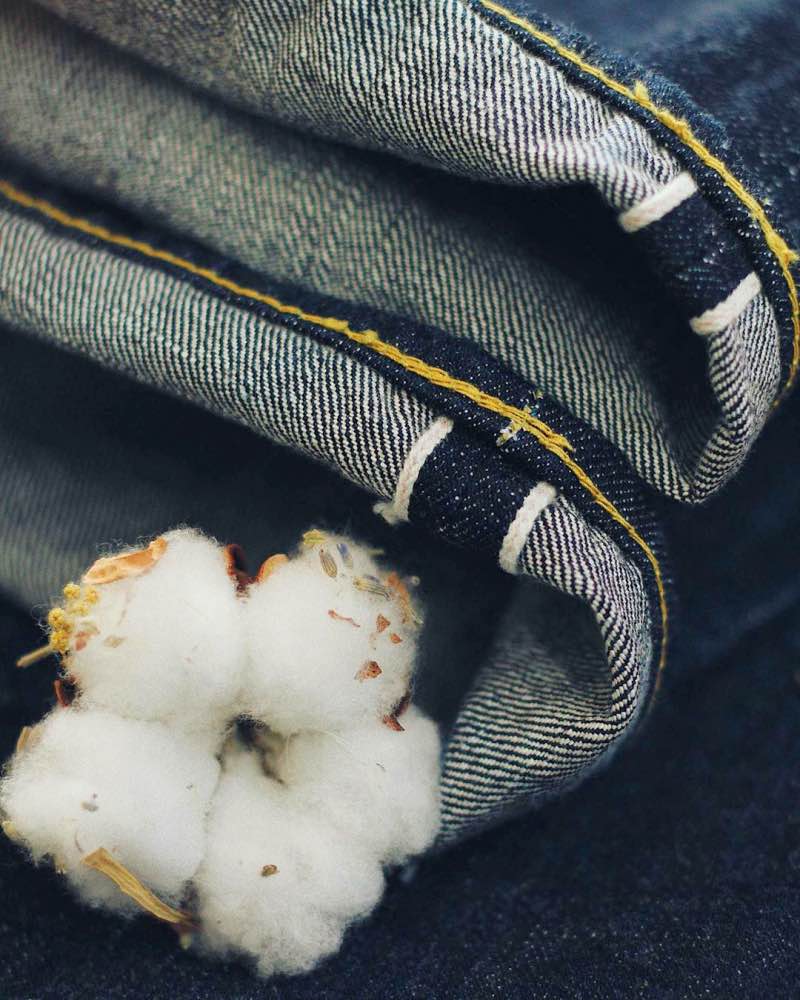
What’s your feeling on stretch denim?
I don’t make it, but I really think stretch denim jeans are great. It’s not something that Full Count customers are asking for but…I think they’re cool.
I noticed on your site you now have ‘super rough’ and ‘straight slub’ denim…are those new?
Yeah, they’re new.
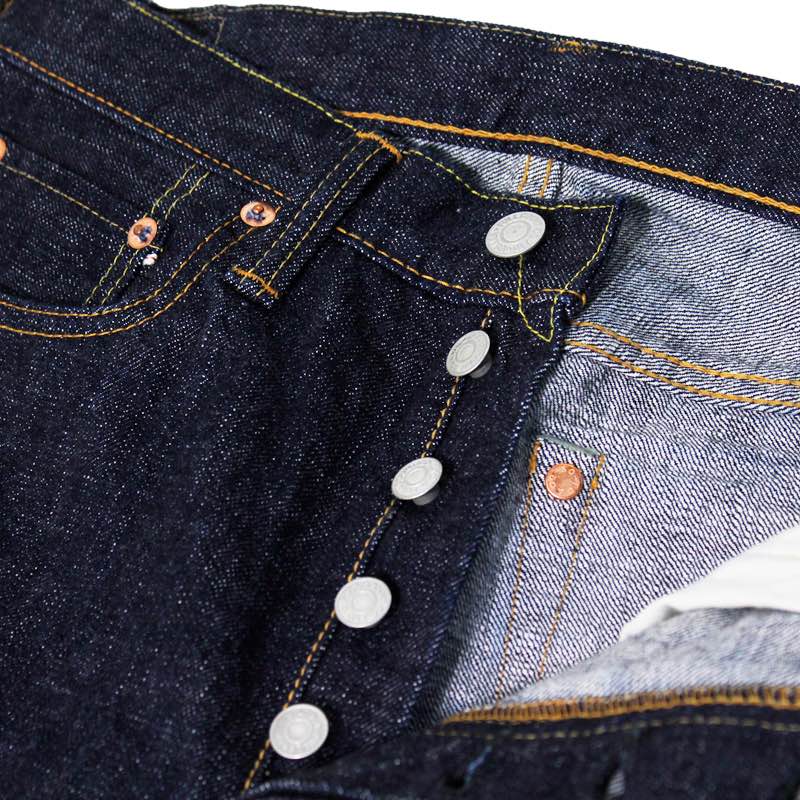
Can you tell me a little a bit about why or…what they are?
Okay, so I actually use two shuttle loom companies. The main one is the one I mentioned earlier, making these Zimbabwe cotton jeans, but this new denim is being made at a different place. They actually used to make fabric for Warehouse, but they don’t use that mill anymore so the mill was interested in trying something new. So I came up with a new concept to try there. Super rough and straight slub are like…(looks around the shelves of jeans)…ah damn, we don’t have any pairs here, but you know, overseas customers really like the slubby, heavier stuff. My staff from Australia wants to start up a Full Count International website so he was wanting, you know, tougher and heavier jeans. Japanese love vintage stuff, but overseas guys want the heavy, slubby stuff so that’s what I’m doing with these new fabrics. So we now sort of have two different concepts at Full Count.
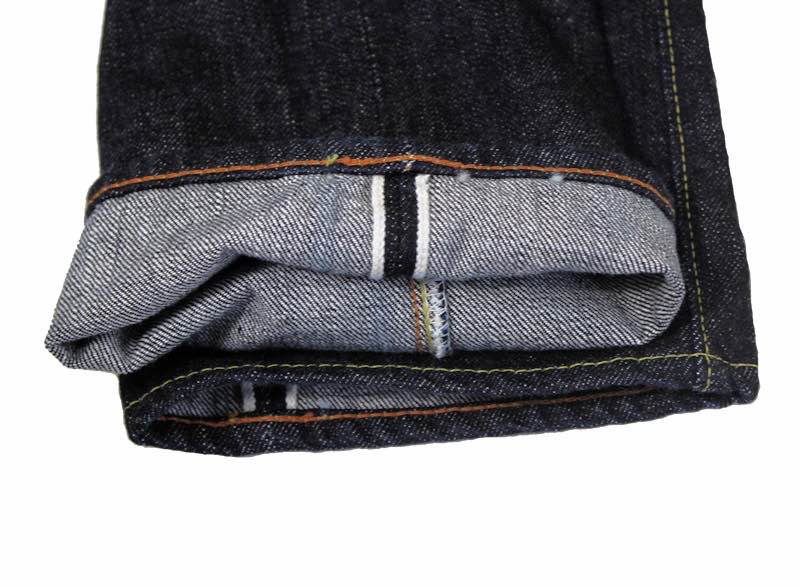
So the slubby and rough stuff is just going to be for overseas?
Well there will be some Japanese people who want them, but yeah, mostly for the international market.
Were you actually born in Osaka?
Yes.
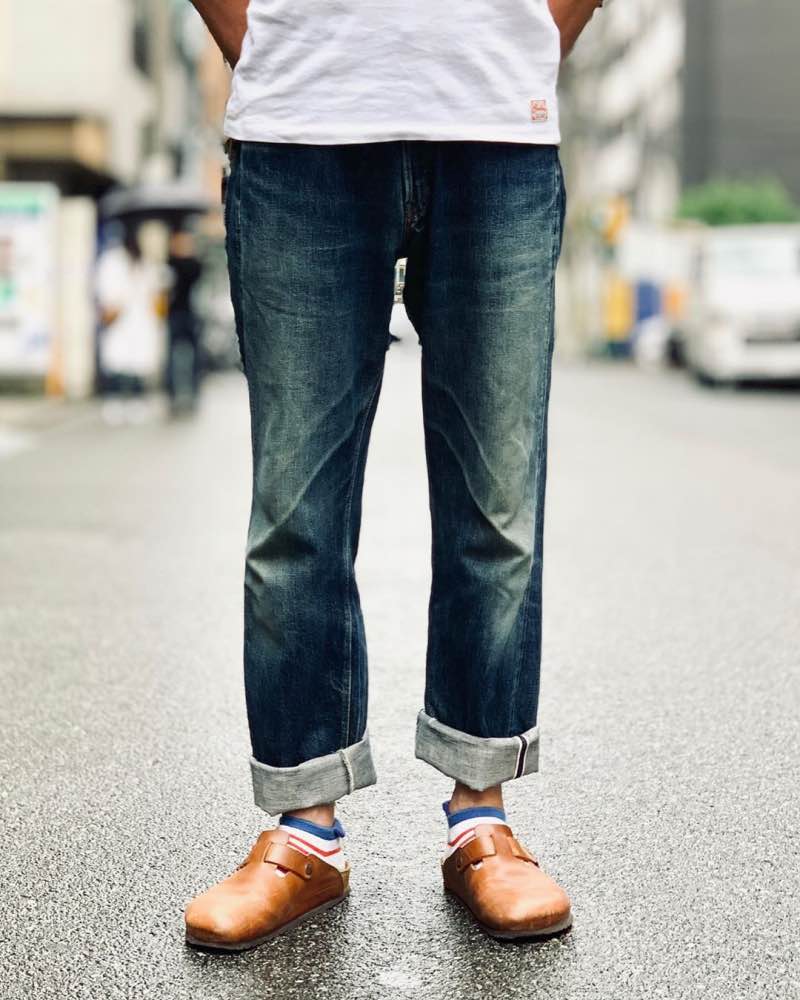
So my next question has nothing at all to do with jeans: What is the best thing about Osaka?
Mmm…the people are down-to-earth. You know, some people say that Tokyo is like London or New York, like so many different kinds of people but…Osaka is Osaka.
Do you have any final message or something you’d like to say to the Full Count fans out there?
Yeah for sure. I’m guessing of course that most people reading this will be English-speaking…like I mean outside of Japan, so I know that some other brands like Iron Heart or Samurai, they have a really strong image in peoples’ minds. They’re really famous. At Full Count we’ve been making certain things for 30 years. Our Japanese fans know that if you wear our jeans, they’re eventually going to turn out like these (shows beautifully soft and faded jeans samples), so they already know that they want the same jeans again once these wear out. Like, for other items besides jeans, they are changing every season…new items every year. Jeans though, I don’t change. This is my concept I’d like to convey. But this is hard because I don’t have so many chances to explain deeply about this kind of stuff in English so I want…I want people to know more.
Well, I’ll definitely explain all you’ve said here in English so…
Yes, please. Thank you.
Last thing I wanted to ask you…what do you think of the term “Osaka 5”? How do you feel when you hear it?
I actually feel honored by it. It’s like the Antwerp 6 or something. We’re all goodfellas.
Miki-san, this has been great. I really want to thank you again for taking the time out to chat.
It’s been my pleasure. Thank you for doing what you’re doing. Any other info you need, just let me know.
Thanks so much.
Check out Full Count’s homepage here.

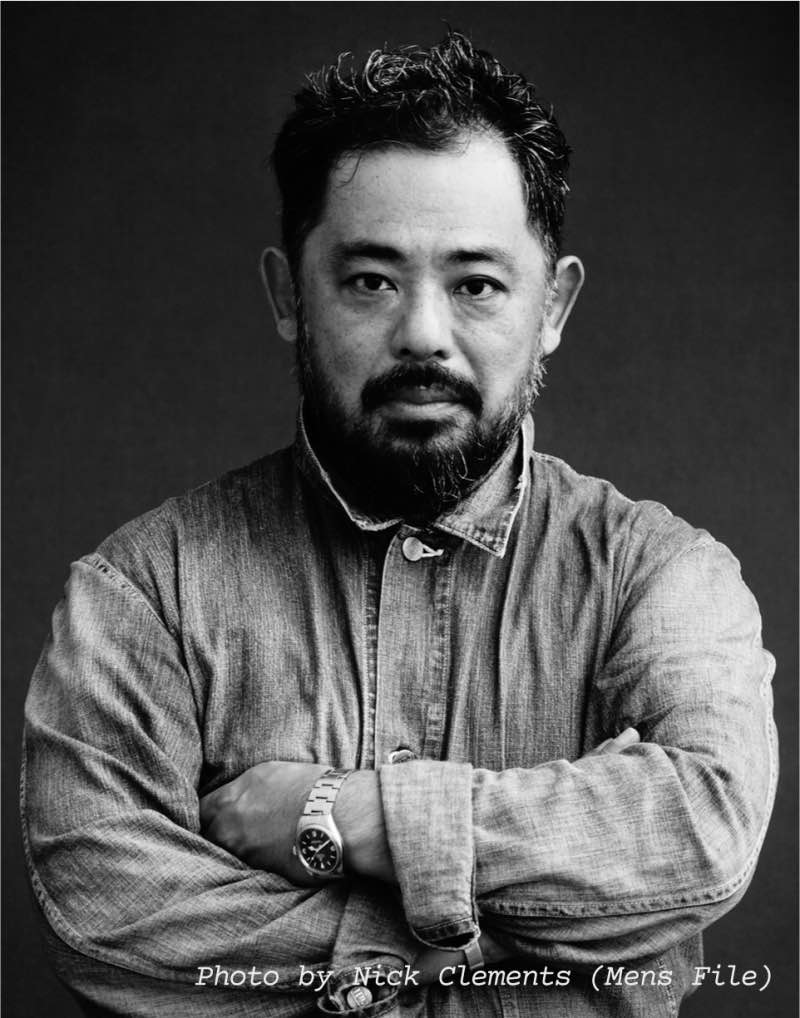
Pingback: Good Times with Full Count’s Miki Tsujita - The Weekly Rundown
He has made the exact replica of the Levi’s 501. I have the 1101 and it feels just like the Levi’s i own. Hopefully i could get the indigo/black 1101 in it’s raw form. Hopefully he does not cease making size 40 denim.
Pingback: Review: Full Count's Modern Interpretation of Vintage Jeans - stridewise.com
Dunno if Tsujita-San will see this but after reading this article I ordered a pair of 1110s. Have been a fan of Ironheart, PBJ, SDA, Momotaro. Knew about Fullcount but never owned. Really responded to his words about his philosophy.